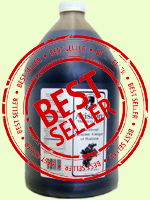By Peggy Trowbridge Filippone, About.com Guide
Balsamic vinegar has become all the rage in America, thanks to creative chefs at upscale restaurants. It is difficult to believe that this robust product of the vine has only come to be appreciated within the last two decades in America, when Italians have been enjoying it for centuries.
The rich, slightly sweet flavor of balsamic vinegar readily lends itself to vinaigrette dressings, gourmet sauces, and brings out the sweetness of fresh fruits such as raspberries, strawberries, and peaches.
Its flavor and complex fragrance is exalted over its lowly cousin, red wine vinegar, just as red wine vinegar leaps ahead of white vinegar. Before delving into a myriad of balsamic vinegar recipes, learn a little bit more about it and how to use it.
What is balsamic vinegar?
How does a lowly vinegar come to reap such praise? As far back as 900 years ago, vintners in the Modena, Italy region were making balsamic vinegar which was taken as a tonic and bestowed as a mark of favor to those of importance.
Although it is considered a wine vinegar, it is not a wine vinegar at all. It is not made from wine, but from grape pressings that have never been permitted to ferment into wine.
Sweet white Trebbiano grape pressings are boiled down to a dark syrup and then aged under rigid restrictions. The syrup is placed into oaken kegs, along with a vinegar “mother,” and begins the aging process. Over the years it graduates to smaller and smaller kegs made of chestnut, cherrywood, ash, mulberry, and juniper until it is ready for sale. All of these woods progressively add character to the vinegar. As it ages, moisture evaporates out, further thickening the vinegar and concentrating the flavor.
Some balsamic vinegars have been aged for over 100 years. It is this aging process that makes true balsamic vinegar from Modena in Northern Italy so expensive.
Source: http://homecooking.about.com/od/howtocookwithcondiments/a/balsamicage.htm
 Shopping Cart
Shopping Cart
